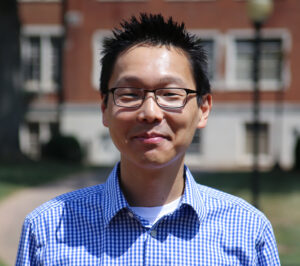
Teaching When Seminary Hurt is the Worst Hurt
The following axiom is often met with solemn nods, sad sighs, and knowing looks of empathy and understanding: “Church hurt is the worst hurt.” At every seminary, there are students with deep wounds from the emotional, mental, physical, and spiritual abuse they experienced in congregational contexts. Seminary communities understand that a church can be the site of terrible harm and heartbreaking pain.
There are also powerful testimonies of resolve and resilience. Our students are not satisfied with the status quo and are seeking the kinds of theological education that will equip them to lead ministries of healing, hope, redemption, and transformation. Some are called to work within existing congregational and denominational structures. Others are participating in new church developments and enacting their convictions to form religious communities in places and among persons that have been ignored and forgotten.
But what happens to teaching when seminary hurt is the worst hurt? I find that the seminary classroom is more responsive to church hurt than seminary hurt. Faculty in theological schools are generally open to acknowledging the trauma and affliction that people encounter in congregations. Some of us share our own scars and wounds. Many of us are theological educators because we too have not given up on all the good that is possible in churches. We are quick to assign readings that address pastoral leadership. We encourage our students to make connections between the theologians in our respective syllabi and congregational praxis in the “real world.” However, the seminary classroom is sometimes slower to respond to the harm and pain inflicted upon students within our own learning communities.
The remainder of this reflection focuses on three specific forms of seminary hurt that I have encountered in my classroom. The first results from a student harming another student with deleterious commentary that assails the dignity of persons within our learning community. My seminary is committed to the full inclusion of LGBTQIA+ persons in Christian leadership and society, but we also welcome students from religious communities that do not share our conviction. A few of these students have been outspoken in their opposition to our position and have utilized classroom discussions to express their disagreement. Other students are unfamiliar with queer theology and grapple with the practical implications of our commitment to LGBTQIA+ justice.
My approach to these instances of harm is to respond promptly and firmly with direct intervention. As a teacher, it is my responsibility to maintain a respectful learning environment. It is my role to hold my students accountable when public professions of their personal beliefs are hurtful. Even if the bulk of these interactions with students occur outside of the classroom in private conversations, there must also be a public acknowledgment of the harm done inside of the classroom.
The second form of seminary hurt is more difficult when I encounter it in my classroom. How do I respond when my colleagues harm students? There are few secrets at a freestanding seminary like mine. With a smaller student population than the nearby high school and an entire faculty collegium that is the same size as a computer science department at some universities, my seminary inhabits an intimate and fraught ecosystem. When I teach about racism within the history of Christianity in the United States, there are occasions when my students discuss the racism they have experienced in other classrooms at the seminary. In doing so, they are rightly underscoring the pervasive realities of racism within Christian institutions today. Studying history is not just about the past, it is also about helping us better understand how the past reverberates in our present. But what is my responsibility to my students? When matters move beyond my classroom, I must navigate multiple layers of collegiality, mutuality, hierarchy, and power.
The third form of seminary hurt revolves around institutional decisions that harm students. My teaching often pivots to engage current events because I seek to be responsive to what is happening in the actual lives of my students. Sometimes, the events at hand deal with controversial matters in our seminary community. There has been confusion and anger when beloved colleagues are dismissed or depart because of arduous conditions. There has also been dismay and frustration regarding policies, procedures, and the pace of institutional change.
In my classroom, I have engaged the following challenge from my students: “What I have dealt with at this seminary is worse than what I have experienced in the church. Shouldn’t the seminary be better than the church, or at least as good as the church?” In these moments, I wrestle with ambivalence. On the one hand, I am further motivated to grow as a teacher and determined to do better in my classroom. On the other hand, I know that participating in pathways toward institutional change requires that I venture outside of my classroom. And some of those places are where seminary hurt awaits and abounds.
Leave a Reply